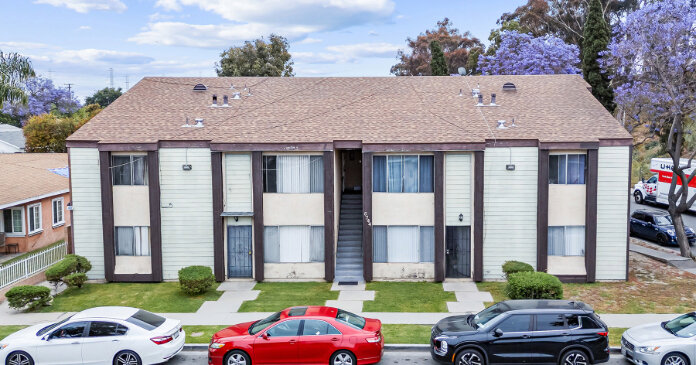
**How Multifamily Properties Are Adapting to California’s Changing Rental Laws**
California’s rental market has been increasingly regulated over the years. Some of these regulations can directly affect the value of your multifamily property. That’s why it’s important to know how these regulations will affect you and the sale of your building.
1. The Rise of Rent Control: The Impact of AB 1482
One of the most talked-about legislative changes in California over the past few years is Assembly Bill 1482, which introduced statewide rent control, effective January 1, 2020. The law limits how much landlords can increase rent for certain residential properties built before 2005. The bill caps rental increases at 5%, plus the cost of CPI, not to exceed a total of 10% in any given 12 month period.
How does this affect multifamily real estate owners?
Multifamily with 5 or more units are valued based on their income. There are a few valuation metrics including Cap rate and gross rent multiplier.
The value is derived from either Net Operating Income (NOI), which is your income minus your expenses divided by the market cap rate. For example, if your building is bringing in 100,000 in rents, and you have $45,000 in expenses (including taxes, insurance, maintenance, property management, replacement reserves, landscaping and other expenses) then your NOI is $55,000. If the market cap rate is 6%, then 55,000/.06= $916,667 would be the value of your building.
Gross rent multiplier (GRM) is a less accurate way of valuation but requires less steps. For example, if your gross rents are $100,000 and the market GRM is 10, then 100,000*10 = $1,000,000.
If your rents are capped at a certain growth rate and you fell behind on rental increases, this directly affects the value of your building. This bill makes it increasingly important to keep up with market rents in California.
How Property Owners Are Adapting:
Property owners are adapting by making sure to keep up with rent increases every 12 months, and keeping rental increases at or under the maximum allowable rent cap. If you’ve found yourself with lower than market rents at a time when you need to sell, there are some strategies you can employ to raise the value of your building.
You can offer cash for keys for tenants to vacate to get the unit to full market rent. Beyond that, it’ll be difficult for most owners to be able to get those units to market without a just -cause eviction.
2. California’s Strict Eviction Protections: The Effects of AB 1482 and SB 91
In addition to rent control, California has introduced new eviction protections, particularly in response to the COVID-19 pandemic. AB 1482 (part of the California Rent Control Act) and SB 91 (the COVID-19 Tenant Relief Act) provide stricter protections for tenants, including:
– Limits on evicting tenants for no-fault reasons (such as for owner occupancy for 2-4 unit properties or substantial renovation).
– Extended moratoriums on evictions during emergencies (like the pandemic).
– Mandatory payment plans for tenants unable to pay rent due to financial hardship.
How Property Owners Are Adapting:
Navigating Eviction Moratoriums: Many multifamily property owners have had to adjust their operations to accommodate the fact that tenants now have more protections against eviction. This has forced landlords to be more flexible in handling late payments, offering payment plans, or working with tenants to resolve disputes outside of court.
Communication is Key: Clear and consistent communication with tenants has become even more important. Property owners are using technology to streamline payment systems and better track tenants’ financial statuses to prevent issues down the line. In many cases, offering solutions before escalating to eviction can help build goodwill and avoid legal challenges.
3. Tenant Protection Laws: Expanding Rights for Renters
Tenant protection laws have increased the rights of renters, making it harder for landlords to evict tenants or remodel their buildings, Additionally, tenants now have more rights to privacy and habitability, with more stringent regulations on the condition of rental units and the rights of tenants to organize.
How Property Owners Are Adapting:
Careful Tenant Selection: Property owners now must be exceedingly careful in who they choose as tenants. This goes beyond just a good credit score and may include comprehensive background checks, employment verification, previous landlord referrals, cosigners, and other methods.
Proactive Property Management: With increased tenant rights, owners must stay pro-active with notices, properly record for everything in case things go south with your tenants. Becoming more efficient at management and finding ways to lower overall costs due to the increased cost of management is key for owners.
Staying Ahead of California’s Rental Law Changes
The evolving landscape of California’s rental laws presents both challenges and opportunities for multifamily property owners. Adapting to these changes—whether through compliance with rent control, updating tenant protections, are going to be essential for staying competitive in a constantly changing market.
For multifamily property owners who are ready to sell, understanding these laws can also help you position your property in the best possible light. Whether you’re looking to capitalize on the market’s potential or navigate legal complexities, JandJbuyers.com is here to make the selling process smooth and hassle-free. Reach out today to learn more about how we can help you sell your multifamily property in California with confidence.
Call us today for a free, no obligation offer today!